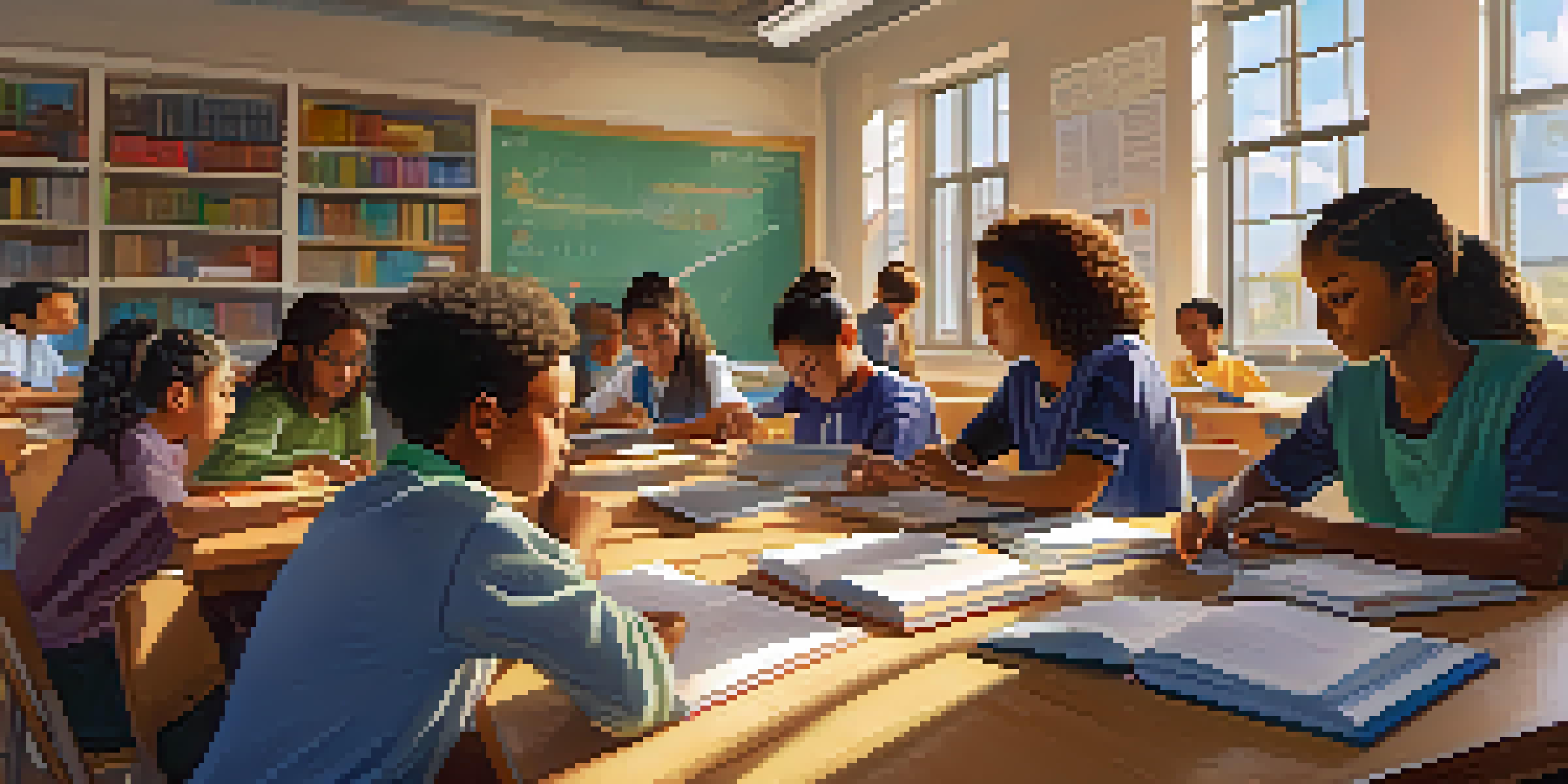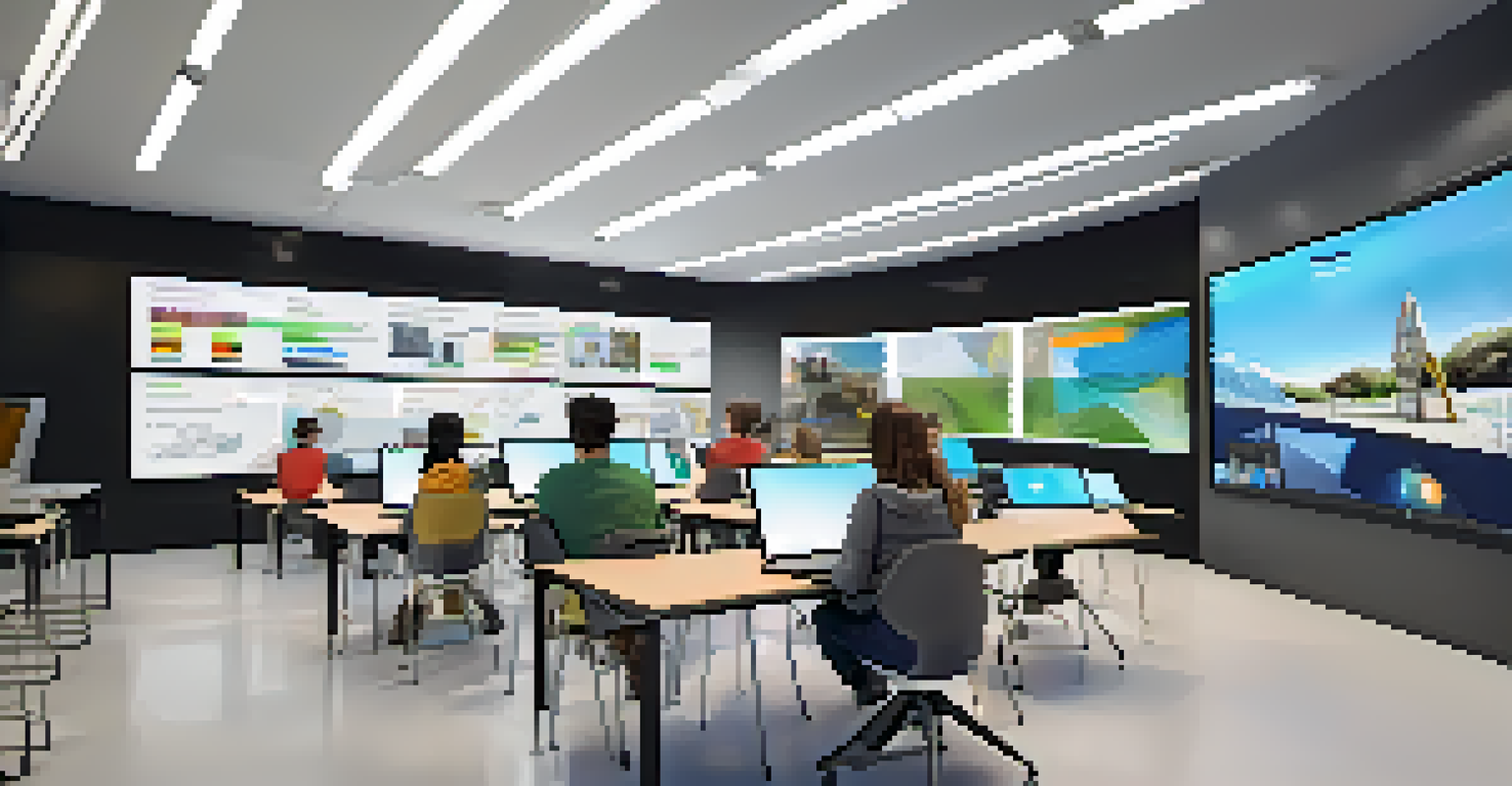The Intersection of Peer Learning and Cooperative Learning

Understanding Peer Learning in Educational Contexts
Peer learning involves students learning from each other, usually within a collaborative framework. This approach recognizes that learners can often explain concepts to their peers in relatable terms, which can deepen understanding. For instance, a student who just mastered a math concept might help a classmate struggling with the same problem, reinforcing their own knowledge in the process.
The greatest gift of education is the ability to think for oneself.
Peer learning not only enhances academic performance but also builds essential social skills. By working together, students learn to communicate effectively and respect different viewpoints. This collaborative effort fosters a sense of community in the classroom, making learning more enjoyable and less isolating.
Ultimately, peer learning encourages a more active role in education, shifting the focus from passive consumption of information to active participation. As students take charge of their learning, they become more engaged and motivated, paving the way for lifelong learning habits.
Defining Cooperative Learning and Its Benefits
Cooperative learning is a structured form of group work where students pursue common goals while being held individually accountable. Unlike casual group work, it relies on a clear framework that emphasizes collaboration, communication, and critical thinking. When students engage in cooperative learning, they not only share knowledge but also develop problem-solving skills by tackling challenges as a team.

The benefits of cooperative learning extend beyond academic gains. Students learn to appreciate diverse perspectives and build trust among peers, which is crucial for effective teamwork. As they navigate group dynamics, they also cultivate essential life skills such as leadership, negotiation, and conflict resolution.
Benefits of Peer Learning
Peer learning enhances understanding and builds social skills through collaborative efforts.
Moreover, cooperative learning can lead to improved retention of information. When students teach each other and work together to understand complex concepts, they are more likely to remember the material long-term, transforming their learning experience into a more profound and impactful journey.
Key Differences Between Peer Learning and Cooperative Learning
While both peer learning and cooperative learning emphasize collaboration, they differ in structure and purpose. Peer learning is often more informal, allowing students to learn spontaneously from each other, while cooperative learning has a defined framework with specific roles and responsibilities. This distinction can affect how students engage with the material and each other.
Alone we can do so little; together we can do so much.
In peer learning scenarios, the dynamics can vary widely depending on student interactions, which may lead to varying levels of effectiveness. On the other hand, cooperative learning is designed to ensure every member contributes to the group’s success, creating a more equitable learning environment. This structured approach minimizes the risk of some students dominating the conversation while others remain passive.
Understanding these differences helps educators tailor their approaches to maximize student engagement and learning outcomes. By recognizing when to implement peer learning versus cooperative learning, teachers can create a balanced educational experience that meets diverse learning needs.
The Role of Technology in Enhancing Learning Strategies
Technology plays a pivotal role in facilitating both peer learning and cooperative learning, especially in today’s digital age. Tools like online discussion forums, collaborative documents, and video conferencing platforms allow students to work together, regardless of their physical location. This accessibility makes it easier for learners to connect and share ideas with their peers.
For instance, platforms like Google Docs enable students to collaborate on projects in real time, fostering an environment of continuous feedback and support. This immediacy not only enhances their learning experience but also teaches them how to navigate modern communication tools essential for future workplaces.
Cooperative Learning Structure
Cooperative learning involves a structured approach that promotes accountability and teamwork among students.
Moreover, educational apps can gamify the learning process, making peer and cooperative learning more engaging. When students participate in interactive, technology-driven tasks, they are more likely to be motivated and invested in their learning.
Creating a Classroom Culture That Supports Collaboration
To effectively implement peer and cooperative learning, educators must cultivate a classroom culture that values collaboration. This begins with building trust among students, ensuring they feel safe to express their thoughts and opinions without judgment. Activities that promote team-building and mutual respect can lay the groundwork for a successful collaborative environment.
Additionally, educators should provide clear guidelines and expectations for group interactions. By outlining roles and responsibilities, students can better understand how to contribute to the learning process, reducing anxiety and confusion. This transparency encourages accountability and helps students see the value of their contributions.
Finally, celebrating collaborative successes, no matter how small, can reinforce the importance of teamwork. Recognizing achievements fosters a sense of belonging and motivates students to continue engaging with their peers in meaningful ways.
Challenges and Solutions in Implementing Collaborative Learning
While peer and cooperative learning offer numerous benefits, they also come with challenges. For instance, some students may resist group work due to past negative experiences or discomfort with collaboration. To address these concerns, educators can start with smaller, low-stakes group activities to help build confidence and ease students into the process.
Another challenge is ensuring equal participation among group members. Some students may dominate discussions while others struggle to contribute. Implementing structured roles within groups, such as a facilitator or note-taker, can help balance participation and encourage quieter students to share their insights.
Role of Technology in Learning
Technology facilitates peer and cooperative learning by enabling collaboration and enhancing student engagement.
Lastly, assessment can be tricky in collaborative settings. Educators should consider using both group and individual assessments to gauge understanding. By evaluating both collaborative efforts and individual contributions, teachers can provide a more comprehensive view of each student’s performance.
The Future of Peer and Cooperative Learning in Education
As education continues to evolve, the integration of peer and cooperative learning strategies is likely to grow. With increasing emphasis on soft skills like teamwork and communication in the job market, these collaborative approaches are becoming essential. Schools are recognizing that fostering these skills through peer interactions prepares students for real-world challenges.
Moreover, the ongoing development of educational technologies will further enhance collaborative learning opportunities. As tools become more sophisticated, they will provide even more ways for students to connect, collaborate, and learn from one another, regardless of geographical boundaries.

Ultimately, embracing peer and cooperative learning not only enriches the educational experience but also equips students with the skills necessary to thrive in a collaborative society. The future looks promising for educators willing to harness the power of collaboration in their classrooms.